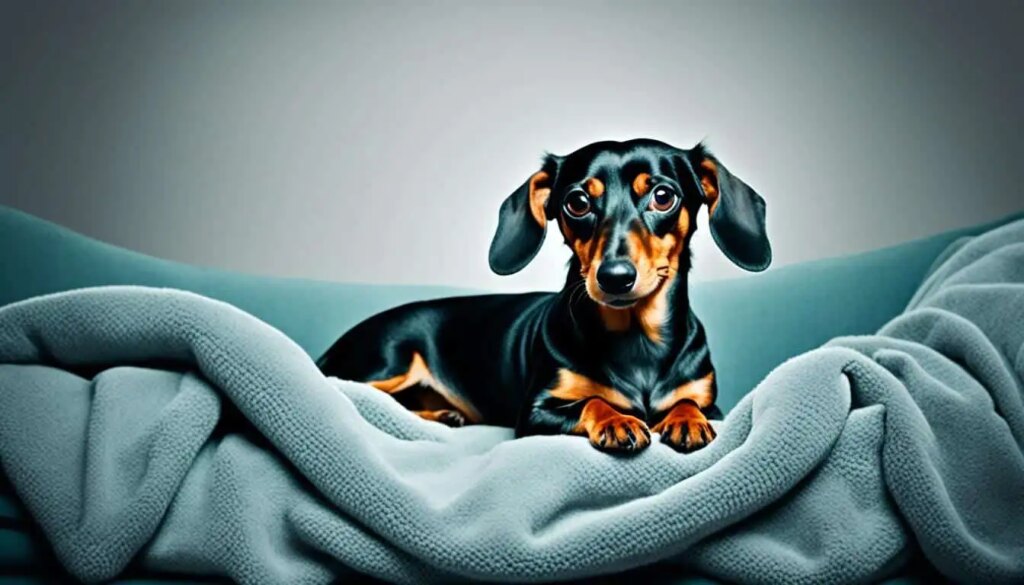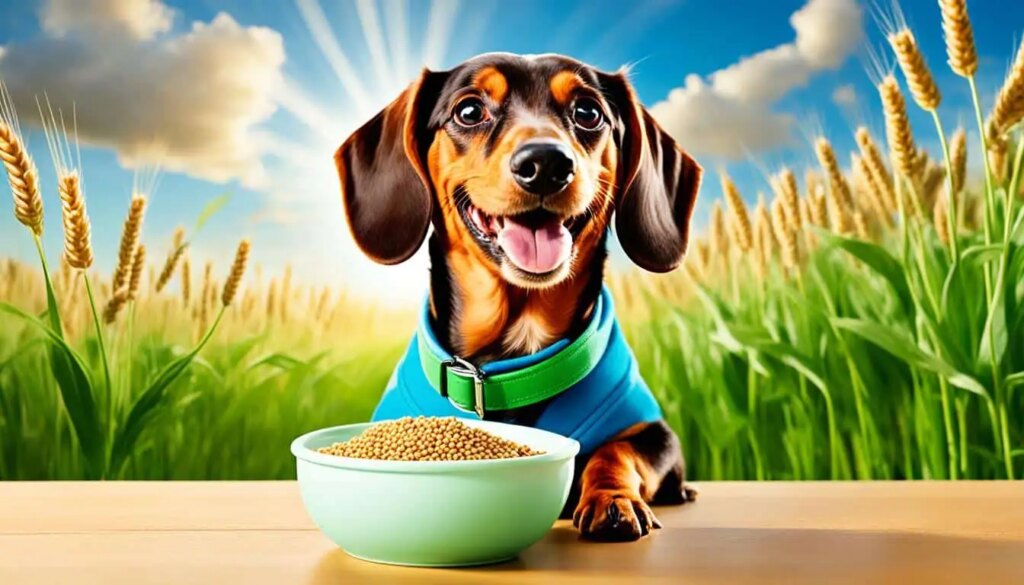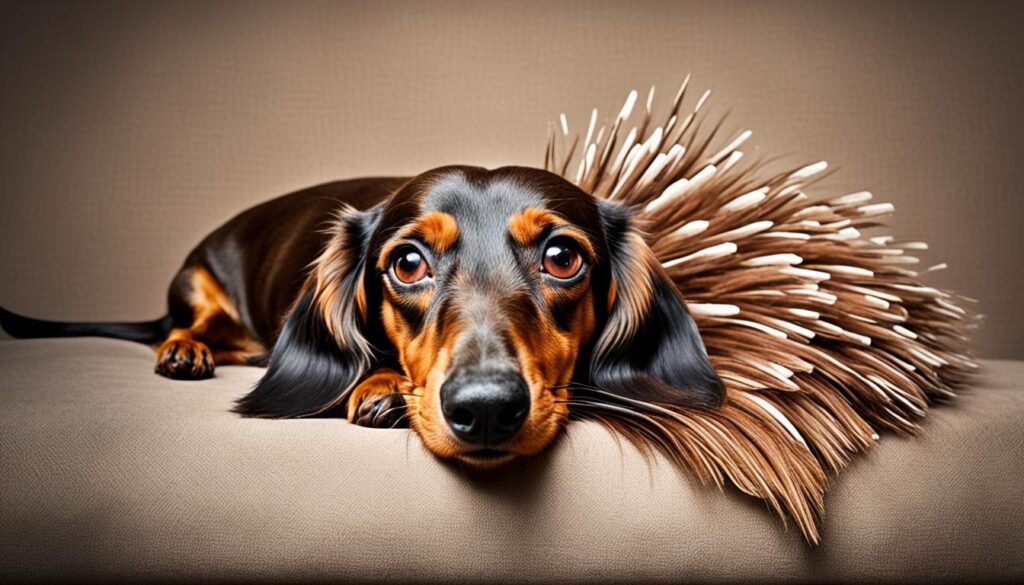As a dog lover and journalist, I’ve often been asked about dachshunds and their shedding habits. Dachshunds, with their unique appearance and lovable personality, are a popular breed among dog owners. However, one common concern for prospective owners is whether dachshunds shed excessively. In this article, I will delve into the topic of dachshund shedding and provide useful dog grooming tips to manage their shedding effectively.
Shedding is a natural process for all dogs, but the amount can vary depending on the breed. When it comes to dachshunds, shedding is a moderate occurrence. While they may not shed as heavily as some other breeds, it’s still essential for owners to understand their shedding patterns and implement proper grooming practices.
By understanding the shedding patterns and coat types of dachshunds, as well as implementing proper grooming practices, owners can keep their furry friends looking and feeling their best while minimizing the impact of shedding on their homes and allergies. Let’s explore the world of dachshunds and shedding together.
Key Takeaways:
- Dachshunds do shed, but it is not considered excessive compared to some other breeds.
- Understanding dachshund shedding patterns and coat types is crucial for effective management.
- Regular grooming and proper care can help minimize the impact of shedding.
- Finding the right grooming tools and establishing a routine are important for managing shedding.
- Proper nutrition plays a significant role in maintaining a healthy coat and reducing shedding.
Understanding Dachshund Shedding: A Breed Overview
Before delving into the specifics of dachshund shedding, it’s important to understand the breed as a whole. Dachshunds, also known as wiener dogs or sausage dogs, come in three coat types: smooth-haired, longhaired, and wirehaired. Each coat type has its own shedding characteristics and grooming needs. Additionally, factors such as size, age, health, and environmental conditions can influence the amount of shedding. By gaining a comprehensive understanding of dachshund shedding, owners can better manage and maintain their pet’s coat.
“Dachshunds, also known as wiener dogs or sausage dogs, come in three coat types: smooth-haired, longhaired, and wirehaired.”
| Coat Type | Shedding Characteristics | Grooming Needs |
|---|---|---|
| Smooth-Haired | Light to moderate shedding | Regular brushing, occasional baths |
| Longhaired | Similar amount of shedding as smooth-haired | More grooming to prevent matting and tangles |
| Wirehaired | The most shedding among the three coat types | Regular brushing, professional grooming |
Understanding the shedding patterns and grooming needs of each coat type is essential for dachshund owners. Smooth-haired dachshunds have short, smooth fur that sheds lightly to moderately. Regular brushing and occasional baths are sufficient to maintain their coat. Longhaired dachshunds have a longer and more luxurious coat, shedding about the same amount as the smooth-haired variety. However, they require more grooming to prevent matting and tangles. Wirehaired dachshunds have a dense double coat and tend to shed the most among the three coat types. Regular brushing and professional grooming are necessary to manage their shedding and maintain their coat’s wiry texture.
Do Dachshunds Shed Excessively?
Dachshunds do shed, but whether it is considered excessive depends on the individual owner’s expectations and tolerance for shedding. Compared to some other breeds, dachshunds are not heavy shedders. However, they do shed a moderate amount of fur throughout the year, especially during seasonal shedding periods. It is important for prospective owners to be aware of this shedding characteristic and be prepared to manage it.
Regular grooming and proper care can help minimize the impact of shedding and keep the dachshund’s coat in good condition. By brushing the dog’s coat regularly, loose fur can be removed, preventing it from spreading throughout the house. Additionally, frequent baths using dog-specific shampoos can help to keep the coat clean and reduce shedding. Paying attention to the dog’s diet and ensuring they receive proper nutrition can also contribute to a healthier coat and minimize shedding.

“Dachshunds do shed a moderate amount of fur throughout the year, especially during seasonal shedding periods.”
Overall, while dachshunds do shed, their shedding is not considered excessive. With regular grooming, proper care, and attention to their overall health, owners can successfully manage shedding and keep their dachshunds looking their best.
Exploring the Three Dachshund Coat Types
Dachshunds come in three distinct coat types, each with its own shedding traits and grooming needs. Understanding these coat types is essential for effectively managing and maintaining your dachshund’s coat. Let’s take a closer look at each coat type and the specific care they require:
Smooth-Haired Dachshund: Shedding and Grooming Basics
The smooth-haired dachshund has short, smooth fur that sheds lightly to moderately. This coat type is relatively easy to care for compared to the other two varieties. Regular brushing with a soft bristle brush or grooming glove helps reduce loose hair and keep the coat looking its best. Occasional baths using a mild dog-specific shampoo will help keep the coat clean and healthy. As their coat is shorter, matting is less of a concern. Overall, smooth-haired dachshunds require less grooming maintenance compared to their longhaired and wirehaired counterparts.
Longhaired Dachshund: Managing the Majestic Mane
The longhaired dachshund possesses a beautiful, flowing coat that sheds about the same amount as the smooth-haired variety. However, their longer fur requires more grooming to prevent matting and tangles. Regular brushing with a slicker brush or wide-toothed comb is necessary to keep their coat free of knots. Pay extra attention to the areas where matting tends to occur, such as behind the ears, under the belly, and around the tail. Professional grooming may be recommended every few months to maintain their majestic mane and ensure proper coat health.
Wirehaired Dachshund: Shedding Traits and Grooming Needs
The wirehaired dachshund has a dense double coat that sheds the most among the three coat types. Regular brushing with a firm bristle brush or a slicker brush with bent wire bristles is crucial to manage their shedding. This helps remove loose fur and prevent matting. Wirehaired dachshunds have a distinctive wiry texture to their coat, which requires professional hand-stripping or clipping to maintain its desired appearance. Additionally, regular visits to a professional groomer every few months can help keep their coat neat and tidy.
Grooming Dachshunds to Reduce Shedding
Grooming plays a crucial role in managing and reducing shedding in dachshunds. Regular brushing helps remove loose fur and prevents matting. Choosing the right grooming tools, such as slicker brushes and grooming gloves, can effectively remove dead hair and stimulate the skin. Bathing should be done as needed, using dog-specific shampoos that promote a healthy coat. Nail trimming and dental care are also essential aspects of grooming. By establishing a regular grooming routine and using appropriate techniques and products, owners can keep their dachshunds’ shedding under control.
Regular brushing is the foundation of proper grooming for dachshunds. It helps remove loose fur, detangle the coat, and stimulate the skin. Use a slicker brush or grooming glove specifically designed for removing loose hair without irritating the dog’s skin. Brushing should be done at least once a week for smooth-haired dachshunds and more frequently for longhaired and wirehaired dachshunds.
Bathing is another important aspect of grooming dachshunds. It helps keep the coat clean and healthy. Use a dog-specific shampoo that promotes a healthy coat and skin. Avoid over-bathing, as it can strip the natural oils from the dog’s skin, leading to dryness and irritation. Instead, bathe your dachshund as needed, such as when they get dirty or develop an odor.
Expert Tip: When bathing your dachshund, make sure to thoroughly rinse out all shampoo to prevent residue build-up, which can cause skin irritation.
In addition to brushing and bathing, other grooming tasks are essential for reducing shedding in dachshunds. Regular nail trimming is important to prevent discomfort and potential injury. Long nails can also cause issues with mobility. Dental care, such as brushing your dachshund’s teeth regularly and providing dental treats or toys, helps maintain oral hygiene and overall well-being.
When it comes to grooming dachshunds, it’s important to choose the right products and techniques. Consult with a professional groomer or your veterinarian for specific recommendations based on your dachshund’s coat type. Establishing a regular grooming routine and integrating it into your dachshund’s care regimen will help keep their shedding under control and ensure they have a healthy and beautiful coat.
Dachshunds and Allergies: Are They Hypoallergenic?
Allergies can be a concern for individuals considering dachshunds as pets. While no dog breed is truly hypoallergenic, some breeds are known to be more allergy-friendly than others. Dachshunds are not considered hypoallergenic due to their shedding. However, the extent of allergies can vary among individuals. It is essential for prospective owners with allergies to spend time with dachshunds and consult with allergy specialists before making a decision. Comparing dachshunds to other breeds known for being more allergy-friendly can also help individuals make an informed choice.
Shedding and Pet Allergies: What Prospective Owners Need to Know
When considering a dog breed, shedding is an important factor to consider for individuals with pet allergies. Shedding is a natural process where a dog’s old or damaged hair falls out to make way for new hair growth. The allergens present in dog hair and dander can trigger allergic reactions in sensitive individuals. While dachshunds do shed, their shedding is not excessive compared to some other breeds. However, it is worth noting that dachshunds have short and dense coats that can still cause allergies in susceptible individuals.
It’s essential for prospective owners to understand that no dog breed is completely hypoallergenic. Allergies are highly individual and can vary from person to person. Even in breeds with minimal shedding, allergens can still be present in the dog’s saliva, urine, or skin glands. Therefore, spending time with dachshunds and observing potential allergic reactions is crucial before making a decision.
Best Breeds for Allergy Sufferers: Dachshund Comparison
While dachshunds are not considered hypoallergenic, there are other breeds that may be more suitable for individuals with pet allergies. These breeds typically have minimal shedding and produce fewer allergens. Some popular hypoallergenic breeds include:
- Poodle: Poodles have a curly, non-shedding coat that traps dander, making them a good choice for allergy sufferers.
- Bichon Frise: These small, fluffy dogs have hair instead of fur, which reduces the amount of allergens they release into the environment.
- Maltese: This breed has a silky, hypoallergenic coat that requires regular grooming to prevent matting.
- Shih Tzu: Shih Tzus have a long, silky coat that sheds minimally, making them a suitable choice for allergy sufferers.
It’s important to note that while these breeds may be more allergy-friendly than dachshunds, individual reactions can still vary. Each person’s sensitivity to allergens is different, and what works for one person may not work for another. Spending time with different breeds and consulting with allergy specialists are crucial steps in finding the best breed for allergy sufferers.
| Breed | Shedding | Allergenicity |
|---|---|---|
| Dachshund | Moderate | High |
| Poodle | Minimal | Low |
| Bichon Frise | Minimal | Low |
| Maltese | Minimal | Low |
| Shih Tzu | Minimal | Low |
Feeding Tips for a Healthy Dachshund Coat
Proper nutrition is crucial for maintaining a healthy coat in dachshunds. Feeding high-quality dog food that is appropriate for their age, size, and specific dietary needs ensures they receive the necessary nutrients for a lustrous coat. Omega-3 fatty acids, which can be found in certain dog food or supplements, are particularly beneficial for skin and coat health. It is important to consult with a veterinarian to determine the best diet plan for a dachshund and to address any specific dietary concerns related to coat health.

Feeding dachshunds a balanced and nutritious diet is essential for promoting a healthy coat. A diet rich in essential fatty acids, vitamins, and minerals helps support optimal skin and coat health. Look for dog food that contains high-quality protein sources, such as lean meats or fish, as well as healthy fats, like chicken or fish oil. These ingredients provide the building blocks for a shiny and healthy coat.
Omega-3 fatty acids are especially beneficial for dachshunds’ coat health. They help nourish the skin, reduce inflammation, and promote a soft and glossy coat. Fish oil, flaxseed oil, or other omega-3 fatty acid supplements are excellent options to consider. However, it is important to consult with a veterinarian before adding any supplements to your dachshund’s diet, as they can have individual dietary needs.
Additionally, it is crucial to consider the specific needs of your dachshund when selecting their food. Factors such as age, activity level, and any underlying health conditions should be taken into account to determine the appropriate nutritional requirements. Consulting with a veterinarian will provide expert guidance in selecting the best diet plan to promote a healthy coat in your dachshund.
Remember, a healthy coat starts from within. By providing your dachshund with a balanced and nutritious diet, you can maintain their coat’s health and shine, minimizing shedding and promoting overall well-being. Remember to consult with a veterinarian to tailor a diet plan that best suits your dachshund’s individual needs.
Conclusion
In conclusion, dachshunds are not known for excessive shedding compared to some other breeds. However, it is important for prospective owners to understand that dachshunds do shed and be prepared for the grooming responsibilities that come with owning these lovable dogs.
By gaining a comprehensive understanding of dachshund shedding and implementing proper grooming practices, owners can effectively manage shedding and keep their furry companions comfortable and looking their best. Regular brushing, using appropriate grooming tools, routine baths, and providing a balanced diet all contribute to a healthy coat and minimize shedding.
For individuals with allergies considering dachshunds as pets, it’s important to note that dachshunds are not considered hypoallergenic due to their shedding. It is recommended that prospective owners spend time with dachshunds and consult with allergy specialists to ensure compatibility.
With proper care and attention, dachshunds can be cherished pets, shedding and all. So, if you’re willing to invest the time and effort in grooming, these adorable wiener dogs can bring joy and companionship to your life.
